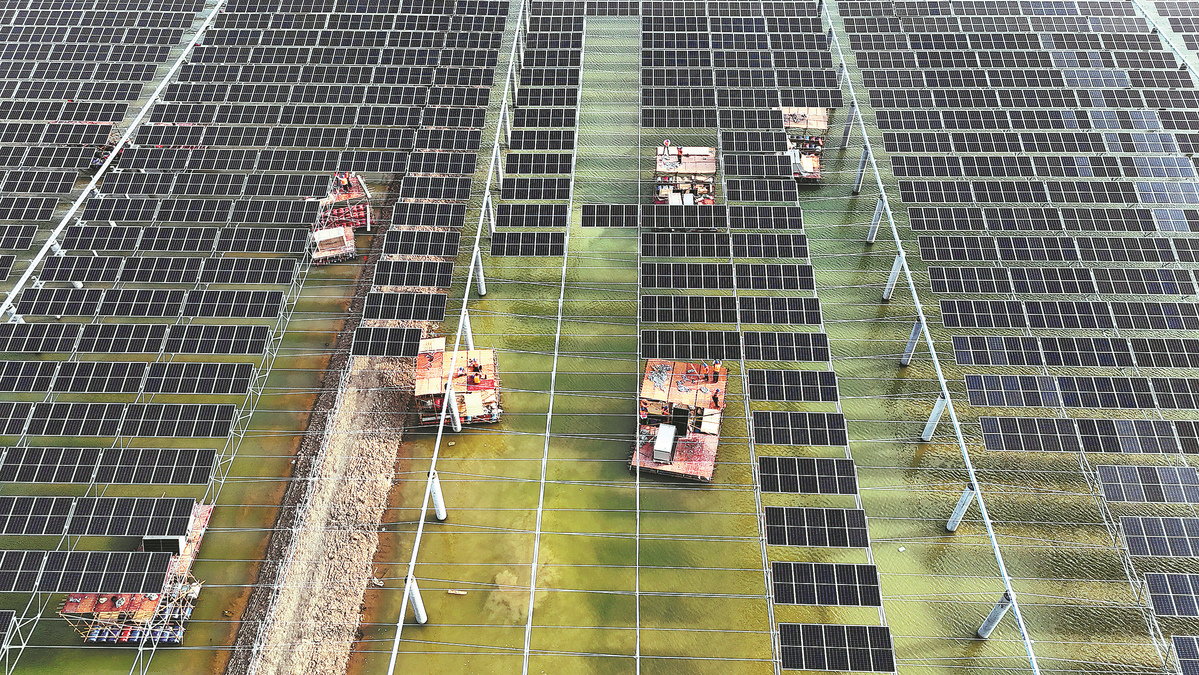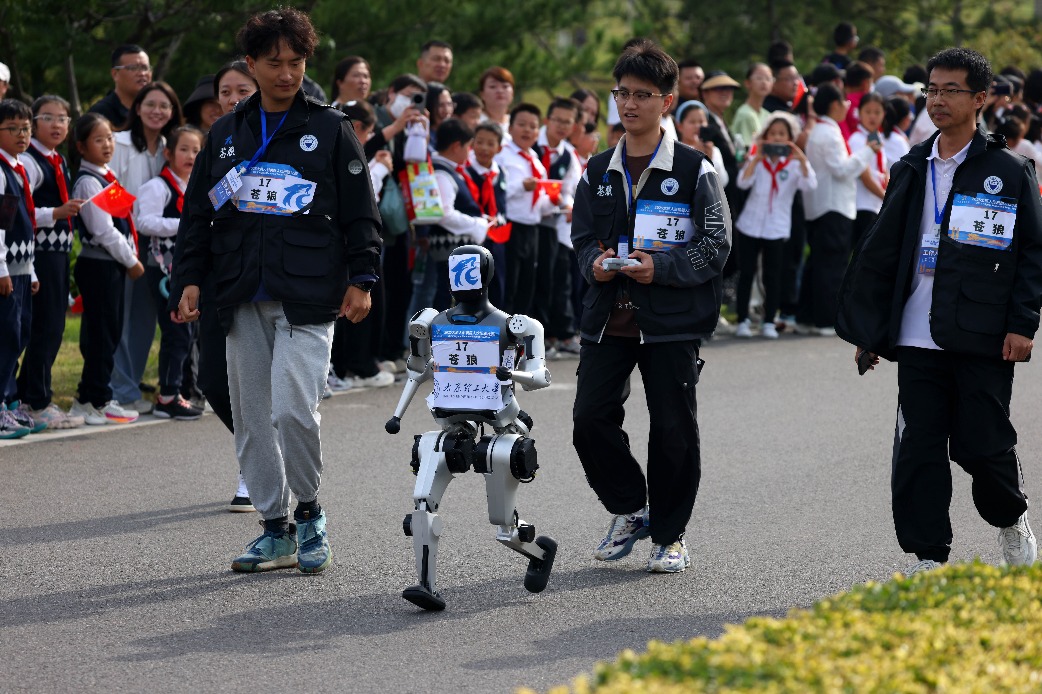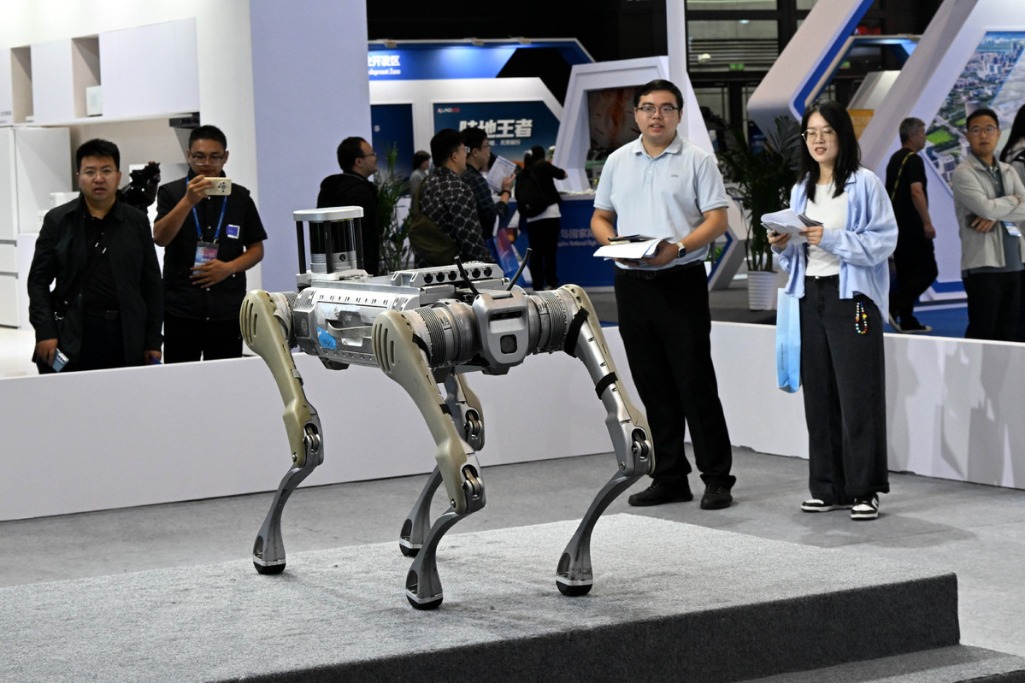Renewables playing critical role in power supply


China's wind and solar power sectors are playing a crucial role in ensuring electricity supply during the summer peak demand season, supplementing traditional energy sources, according to industry data and officials.
The 2-gigawatt Kubuqi solar power project, located in the Kubuqi Desert in North China's Inner Mongolia autonomous region, has been generating an average of 10.31 million kilowatt-hours daily since June, said its operator China Huaneng Group Co Ltd.
This has further increased the proportion of clean energy in the power supply of the electricity grid of the region, one of China's major large-scale renewable energy bases.
The project, with an intelligent operation and maintenance system to increase power generation, ensures stable supply of green power during high temperatures, said Jia Shaobai, deputy director of the Kubuqi photovoltaic power station of China Huaneng Group Co Ltd.
According to Hou Wenjie, director of the Statistics and Data Center of the China Electricity Council, the proportion of new energy power generation is currently about a quarter of the country's total power generation, thanks to the continuous increase in the penetration rate of new energy.
It is gradually becoming the main source of incremental electricity and playing an increasingly important supporting role in power balance, he said.
Significant investment and technological progress have further positioned China as the operator of the world's most advanced power grid, while ensuring power supply during the peak demand season, according to the council.
Song Hongkun, deputy director of the National Energy Administration, said China's renewable energy has maintained high-speed development, high-proportion utilization and high-quality consumption in recent years, playing an important role in ensuring power supply and promoting energy transition.
As of the end of April, non-fossil energy power generation capacity accounted for nearly 60 percent of China's total installed capacity, among which grid-connected wind power and solar power reached 540 million kilowatts and 990 million kilowatts, respectively, making up a combined 44 percent of the total installed capacity, data released by the administration show.
China's total renewable energy power generation capacity reached 2.017 billion kilowatts by the end of April, a year-on-year increase of 58 percent. Wind and solar power combined reached 1.53 billion kilowatts, historically surpassing thermal power capacity, it said.
China has been stepping up efforts to construct large-scale clean energy bases and inter-provincial transmission lines, eyeing to ensure a national renewable energy utilization rate of no less than 90 percent by 2027, said Song.
To enhance the power system's ability to absorb renewable energy, China has implemented a series of measures, including coordinated planning for the development of power grids and renewable energy sources.
As summer heat intensifies and power demand surges, regions across China are also increasingly leveraging virtual power plants (VPPs) that aggregate distributed renewable energy sources like wind and solar, alongside energy storage, to bolster grid stability and ensure reliable electricity supply.
This growing reliance on aggregated clean energy comes as traditional power sources are supplemented to meet peak consumption.
A virtual power plant is a network of decentralized energy resources that are controlled via software to function as a single, flexible power source. It allows these dispersed resources to mimic the behavior of a traditional power plant, providing electricity to the grid or responding to changes in demand.
Shanghai's Songjiang district, for example, has come up with the city's first district-level regulatory framework for VPPs. The framework, drafted by State Grid Shanghai Songjiang Power Supply Co, aims to establish a 100 megawatt demand-side flexible peak-shaving VPP by the end of 2025 — capable of stabilizing 5 percent of the annual maximum load.
China, the world's largest market for low-carbon energy investment, is aggressively pursuing VPPs to bolster its grid flexibility and renewable energy integration, setting targets to reach 20 gigawatts of virtual power plant capacity by 2027 and 50 GW by 2030.
This initiative aims to mitigate power fluctuations and enhance grid stability, ensuring reliable electricity supply in Songjiang during the summer peak season.



































